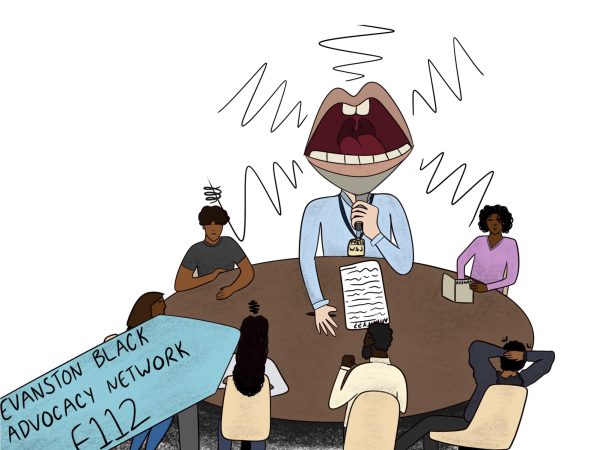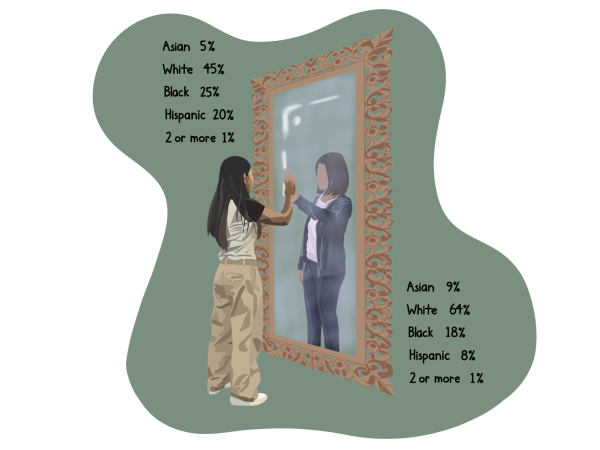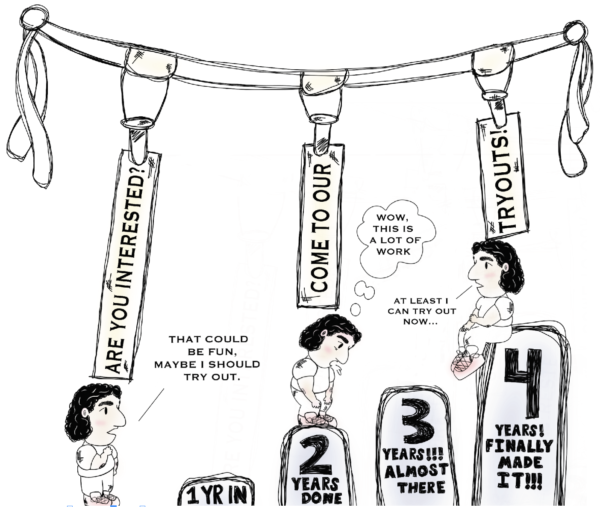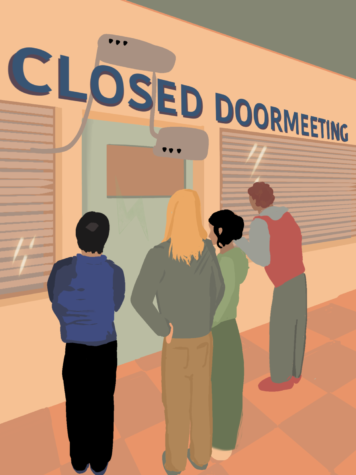Letter from the Editors | ETHS is neglecting student experiences
December 14, 2020
The Evanstonian is a student-led publication devoted to telling stories about ETHS. In the past year, every member of our staff has had their own experiences with e-learning, and every member of our staff is suffering in some way—in public or in private, in solitude or in companionship, with silent tears or with howls of rage. Yet, we have been given the privilege and responsibility of sharing our stories and the stories of the students we represent with the broader community.
We have not written this piece out of a desire to attract readers but out of the need to truthfully account and call attention to the unnumbered tears of ETHS students, tears which have gone ignored by far too many.
As we have undertaken the task of analyzing enhanced e-learning and how it interacts with student social and emotional wellbeing, we feel that the ETHS administration has failed its students by choosing to place education above student wellbeing and by refusing to implement the necessary changes to how remote learning operates. While it is understandable that ETHS wanted a return to normalcy while planning this school year, it is abundantly clear that there is nothing normal about the way ETHS has operated. These efforts to return to a regular school system have led to an increase in student stress levels (65 percent report feeling highly stressed, according to a survey conducted by the Student Union) and, according to the ETHS fall survey, many students need support with motivation (72 percent) and with wellbeing (39 percent). While the ETHS administration has begun acknowledging the pain and struggles of its students, no major structural changes have been made.
As it exists, e-learning is filled with tests and quizzes given as though we can learn at the same rate as in years past, greater amounts of both synchronous and asynchronous work, Zoom or Google Meets classes that last 70-minutes straight with minimal student interaction leading to immense fatigue and intense feelings of isolation. These failures lead to the same critical point: student suffering.
Institutionally, schools create significant anxiety among teenagers. High schools across the country have ignored student mental health in favor of content. Add to that the complicated, ever-changing social world of high school and the unequivocal reality of the racial inequities students of color face at ETHS and beyond, school has never been a healthy environment.
However, the world created by COVID-19 has fundamentally altered our lives during some of the most influential, formative years to date, adding a multitude of stressors to everyday life, and the use of e-learning has only augmented the stress students are facing by orders of magnitude. Not only do students have to worry about their score on an upcoming physics test, but countless students are worried about the safety of their family, fearful about job loss due to economic downturns, dealing with isolation, distanced both physically and mentally from friends and peers and mourning the loss of loved ones. When faced with such obstacles, students will suffer—this additional suffering is the clear consequence of enhanced e-learning and can be reduced with changes to the system currently implemented.
This is a nearly universal experience; almost every student is suffering in their own way. None of us share the same pains, yet we all feel them.
This is not to say that ETHS has not been working to ensure student wellbeing during these challenging times, as many teachers and student services staff are working for hours on end to help students adapt to the remote environment, but this work is unable to heal the wounds that have inflicted students, in part, because it has not been an absolute priority.
Unless there is a strong push from the administration to change the culture around e-learning, student suffering will remain the status quo.
These are the steps that The Evanstonian Editorial Board believes need to be taken.
We expect that the ETHS administration and teachers think critically about the workload that they give students.
With COVID-19 now worse than ever, it isn’t reasonable to act as though students are only having to navigate their schoolwork. ETHS gave space for students to complete work on their own time in the spring—when cases were much lower. That same grace and understanding must be extended now. This does go against the stated goal of creating a “real school environment” remotely, but such a goal is folly given the impossibility of creating the interpersonal relationships that are necessary for the success of a “real school.”
We expect that the ETHS administration actively acknowledges the realities that most students are facing.
We understand that this is not a popular choice, nor is it one that will benefit the school’s image, but it is needed to change the trend of student wellbeing. Perhaps ETHS is faring better than any other schools. All this means is that others are suffering as well. Hearing that we are better than others does not reduce the pain we are experiencing.
We expect that the ETHS administration will work rigorously to ensure that students and teachers are fully aware of the resources available to them.
There is no benefit in providing resources if they aren’t being used, something suggested by the staggering numbers of students who have reported not using school resources. Acting as though giving resources without clearly communicating what they are does nothing except present a good story for outside observers. Students deserve clear communication about the guidelines social workers and psychologists follow, the benefits that can come with therapy and how they can get started, alongside a detailed explanation of online resources and what benefits they provide. Teachers need to be aware of the social and emotional learning toolkit, which many teachers have never heard about, that has been developed by ETHS and should be given as much instruction and support as they need in implementing these tools.
We expect that the ETHS administration looks into the efficacy of the mental health resources that they are providing by consulting with students and third-party mental health professionals.
Given the lack of student engagement with wellbeing resources, there is insufficient data about the impact they have on students. By engaging in conversations with students, the effectiveness of these resources can be quantified and changes can be made to increase the positive impacts they create. If the school wants to claim that they are doing everything possible for their students, let them prove it.
These steps are only the beginning of a long recovery and will not heal the wounds that many students have received over the past year. However, they are needed if any shred of student wellbeing is to endure through this time.
ETHS has the potential to be a home for students, but that requires that student voices are heard and understood. The Evanstonian implores that the administration listens to the calls of its students and changes course appropriately.


















